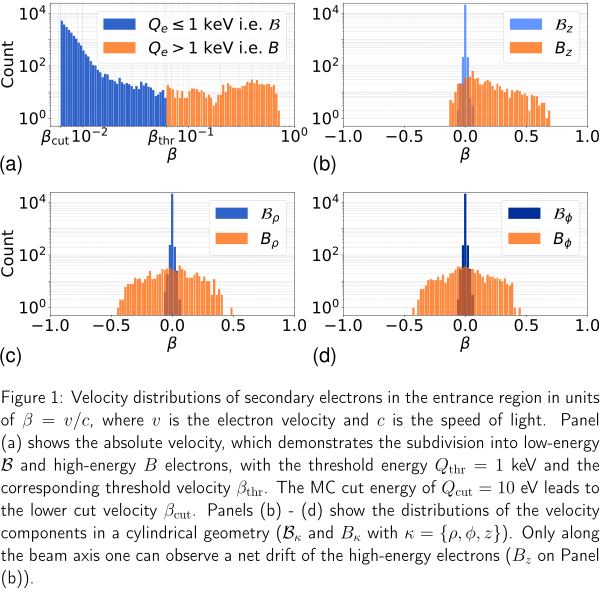Magnetic field of a proton pencil beam as range verification method: The impact of secondaries
PD-0899
Abstract
Magnetic field of a proton pencil beam as range verification method: The impact of secondaries
Authors: Martin Rädler1, Giulia Buizza2, Prasannakumar Palaniappan1, Chiara Gianoli1, Guido Baroni2, Chiara Paganelli2, Katia Parodi1, Marco Riboldi1
1Ludwig Maximilian University of Munich, Department of Medical Physics, Garching b. München, Germany; 2Politecnico di Milano, Department of Electronics, Information and Bioengineering, Milano, Italy
Show Affiliations
Hide Affiliations
Purpose or Objective
The detection of the electromagnetic signal, in particular the magnetic field generated by a proton beam, has been proposed as a range verification approach for ion beam therapy. In this work, we investigate the impact of secondary particles from a proton pencil beam stopping in water on the magnetic field created by the primary protons.
Material and Methods
With Monte Carlo (MC) we accurately simulated low-energy interactions through the Geant4-DNA extension. We exported particle phase spaces of MC simulated proton pencil beams in water with variable spot sizes and a peak beam current of 0.2 μA, in agreement with current performance of pulsed synchrocyclotron accelerators. Subsequently, we calculated individual and average charge and current density of protons and secondary electrons for a statistical analysis, also serving as an input of a finite element analysis (FEA) that estimates the magnetic field. The FEA exploits the beam's cylindrical symmetry and has been adjusted to allow for non-solenoidal current densities, as necessary for a stopping proton beam.
Results
The proton charge density rises towards the range and is not perturbed by energy straggling. The losses due to nuclear reactions are up to 15% and allow an approximately constant longitudinal current density. The proton density is however relatively low (at most 0.37 protons per mm³ for the 0.2 μA current), leading to considerable current density fluctuations. These are even stronger for the radial current, which is yet two orders of magnitude weaker than the longitudinal current and therefore largely negligible. Secondary electrons, that far outnumber the primary protons by at least a factor of 10, reduce the primary proton current by only 10% due to their mostly isotropic flow. Only a small fraction of those electrons (<1%) undergoes head-on collisions. These higher energy electrons with Q_e>1 keV have a longitudinal drift along the beam line (see Fig. 1). In the far-field, both contributions to the magnetic field strength (longitudinal and lateral) are independent of the beam spot size. We also find that nuclear reaction related losses cause a shift of 1.3 mm to the magnetic field profile relative to the actual range, which is further enlarged to 2.1 mm by the electron current. While the current density variations cause significant magnetic field uncertainty close to the central beam axis with a signal-to-noise ratio (SNR) close to one, they average out at a distance of 10 cm with the SNR of the total magnetic field rising to 45.

Conclusion
We find that the primary protons constitute the dominant component of a proton pencil beam's current density, despite the significantly larger electron charge density. With the high SNR of the magnetic field, our analysis encourages its experimental detection through sensitive instrumentation, such as optical magnetometry.